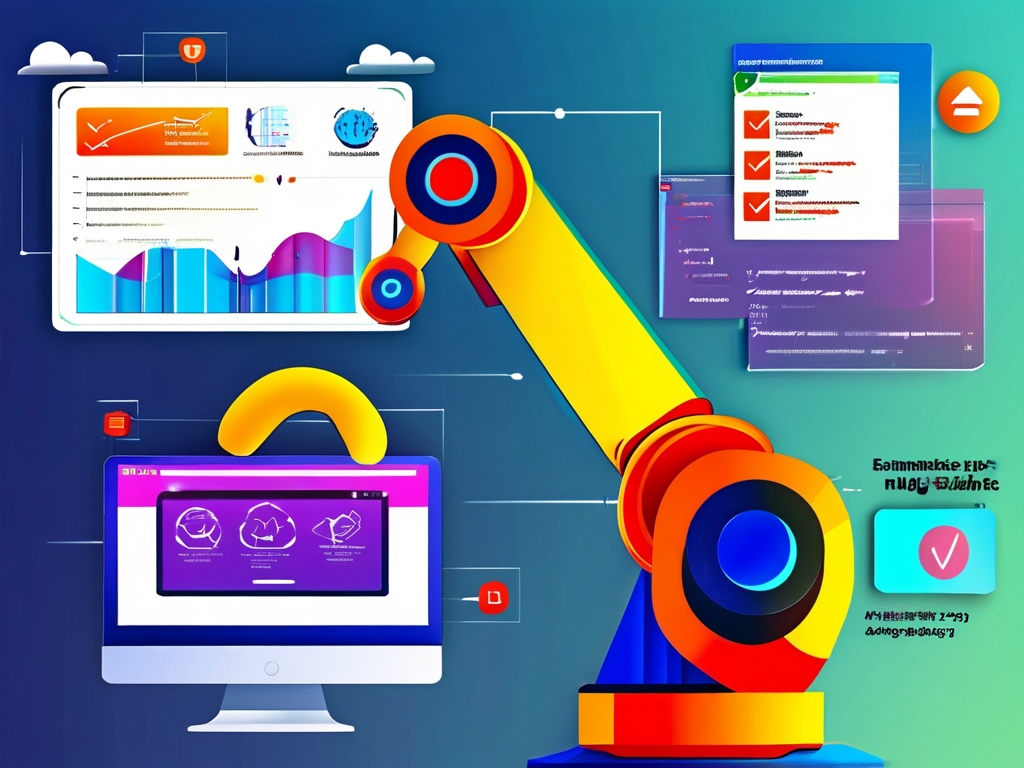Automated deployment has become a cornerstone of modern software development, enabling teams to deliver updates faster, reduce human error, and maintain consistency across environments. This article compiles a comprehensive summary of automated deployment solutions, comparing their features, use cases, and integration capabilities to help organizations choose the right strategy.
1. The Importance of Automated Deployment
Automated deployment eliminates manual intervention in releasing code, ensuring that applications move seamlessly from development to production. Key benefits include:
- Speed: Deployments occur in minutes instead of hours.
- Consistency: Environments are replicated accurately.
- Risk Reduction: Automated testing minimizes deployment failures.
- Scalability: Supports rapid scaling for cloud-native applications.
Organizations adopting DevOps or CI/CD pipelines rely heavily on automation tools to stay competitive.

2. Popular Automated Deployment Solutions
Below is a curated list of widely used tools and frameworks:
a. Jenkins
- Overview: An open-source automation server with a vast plugin ecosystem.
- Strengths: Flexible, supports complex workflows, and integrates with nearly every DevOps tool.
- Limitations: Steep learning curve; requires manual configuration for scalability.
- Best For: Teams needing customizable pipelines.
b. GitLab CI/CD
- Overview: Built-in CI/CD capabilities within GitLab’s DevOps platform.
- Strengths: End-to-end visibility, native integration with Git repositories, and cloud-native support.
- Limitations: Limited flexibility compared to Jenkins.
- Best For: Organizations using GitLab for version control.
c. CircleCI
- Overview: A cloud-based CI/CD platform optimized for speed.
- Strengths: Easy setup, parallelism for faster builds, and robust security.
- Limitations: Costs escalate for large teams.
- Best For: Startups and mid-sized companies prioritizing simplicity.
d. AWS CodeDeploy
- Overview: Amazon’s service for automating deployments to EC2, Lambda, or on-premises servers.
- Strengths: Deep integration with AWS services, blue/green deployment support.
- Limitations: Vendor lock-in with AWS.
- Best For: Enterprises heavily invested in AWS.
e. Kubernetes-based Deployment (Argo CD/Flux)
- Overview: GitOps-driven tools for managing Kubernetes deployments.
- Strengths: Declarative configuration, self-healing capabilities.
- Limitations: Requires Kubernetes expertise.
- Best For: Cloud-native applications using containers.
3. Comparison Summary Table
| Tool | Integration | Scalability | Cost | Learning Curve |
|---|---|---|---|---|
| Jenkins | Extensive plugins | High | Free (open-source) | Steep |
| GitLab CI/CD | Native Git integration | Moderate | Freemium | Moderate |
| CircleCI | Cloud-native | High | Paid | Low |
| AWS CodeDeploy | AWS ecosystem | High | Pay-as-you-go | Moderate |
| Kubernetes Tools | Kubernetes-native | Very High | Free/Paid | Steep |
4. Key Considerations for Choosing a Solution
- Team Expertise: Tools like Jenkins or Argo CD require technical proficiency.
- Infrastructure: Cloud-first vs. hybrid vs. on-premises.
- Budget: Open-source vs. subscription-based models.
- Compliance: Security and audit requirements (e.g., SOC 2).
5. Best Practices for Implementation
- Start Small: Pilot automation for non-critical workflows.
- Version Control Everything: Store pipelines as code in Git.
- Monitor Deployments: Use tools like Prometheus or Datadog.
- Iterate: Continuously refine pipelines based on feedback.
6. Future Trends in Automated Deployment
- AI-Driven Pipelines: Predictive analytics to optimize deployments.
- Serverless Deployments: Tools tailored for FaaS (Function-as-a-Service).
- Multi-Cloud Strategies: Solutions supporting AWS, Azure, and GCP simultaneously.
Automated deployment is no longer optional—it’s a necessity for agile software delivery. By leveraging the right tools from this summary table, teams can achieve faster release cycles, improved reliability, and better resource utilization. Whether adopting GitLab CI/CD for simplicity or Kubernetes for scalability, the key lies in aligning the solution with organizational goals and technical constraints.










